The Role of Recycling in Preserving Natural Resources
Recycling is not just a buzzword; it's a powerful tool we can wield to safeguard our planet's precious resources. Imagine for a moment a world where waste is minimized, and every material is reused to its fullest potential. That’s the world recycling can help create! By recycling, we reduce the strain on our natural resources, ensuring that future generations can enjoy the same abundance we do today. It’s like giving Mother Earth a much-needed break, allowing her to replenish and heal.
When we think about recycling, it's essential to understand that it goes beyond just tossing a plastic bottle into a bin. It’s about creating a circular economy where materials are continuously repurposed rather than being discarded. This process not only conserves valuable resources but also reduces the energy consumption associated with producing new products. In fact, recycling can save up to 95% of the energy required to produce new aluminum from raw materials! That’s a staggering amount of energy that could be redirected towards more sustainable practices.
Moreover, recycling plays a crucial role in reducing the amount of waste that ends up in our landfills. According to recent statistics, recycling can divert over 75 million tons of waste from landfills each year. Think about it: every time you recycle, you're contributing to a significant reduction in landfill waste, which in turn lessens the need for new landfill sites. This is incredibly important because landfills can take up vast amounts of land and can lead to serious environmental degradation.
But the benefits of recycling don’t stop there! It also has a profound impact on our environment. By recycling, we can significantly lower greenhouse gas emissions. For instance, recycling paper reduces emissions by 40% compared to producing new paper from trees. This means that every piece of paper you recycle is a step toward a healthier planet. In a world grappling with climate change, every little bit helps, and recycling is one of the most effective ways to make a difference.
In essence, recycling is more than just a responsible choice; it’s a movement towards sustainability. It encourages us to rethink our consumption habits and fosters a culture of awareness about the importance of resource conservation. So, the next time you consider tossing something in the trash, think about the journey it could take if you chose to recycle instead. You’re not just making a choice for yourself; you’re making a choice for the planet!
- What materials can be recycled? Most common recyclable materials include paper, cardboard, glass, metals, and certain plastics. Always check local guidelines for specifics.
- How does recycling help the economy? Recycling generates jobs, stimulates the economy, and reduces the costs associated with waste management.
- Can recycling really make a difference? Absolutely! Recycling conserves resources, reduces pollution, and saves energy, contributing to a healthier planet.
- What can I do to improve recycling efforts in my community? Get involved in local initiatives, educate others about the benefits of recycling, and participate in community clean-up events.

The Importance of Recycling
Recycling plays a crucial role in reducing waste and conserving natural resources. It’s not just a trendy buzzword; it’s a vital practice that can have a profound impact on our planet. Imagine a world where our landfills are overflowing, and the air is thick with pollution. Sounds grim, right? That's where recycling steps in like a superhero, ready to save the day! By understanding the importance of recycling, individuals and communities can make informed decisions about waste management and resource conservation.
One of the most significant aspects of recycling is its ability to keep valuable materials in circulation. Think of recycling as a continuous cycle, much like a revolving door that allows resources to be reused rather than thrown away. This not only helps to conserve raw materials but also reduces the energy needed to produce new products. For instance, recycling aluminum cans saves up to 95% of the energy required to create new aluminum from bauxite ore. Can you believe that? It’s like finding a hidden treasure in your attic!
Moreover, recycling contributes to a healthier environment. By diverting waste from landfills and reducing the need for new materials, we can significantly decrease pollution levels. When we recycle, we’re not just cleaning up our neighborhoods; we’re also protecting wildlife and preserving ecosystems. It’s a win-win situation! To illustrate this point, consider the following table that highlights the impact of recycling on natural resource conservation:
| Material | Energy Saved by Recycling | Natural Resources Conserved |
|---|---|---|
| Aluminum | 95% | 4 tons of bauxite ore |
| Glass | 30% | 1.2 tons of raw materials |
| Paper | 60% | 17 trees |
As you can see, recycling isn’t just about tossing your plastic bottles into the bin. It’s about making a conscious choice to protect our planet and its resources. When communities embrace recycling, they pave the way for a cleaner, greener future. It’s like planting seeds of sustainability that will grow and flourish for generations to come.
Ultimately, the importance of recycling cannot be overstated. It’s a collective effort that requires the participation of everyone. So, the next time you think about tossing something in the trash, take a moment to consider if it can be recycled. By doing so, you’re not just reducing waste; you’re becoming a part of a larger movement towards sustainability and environmental responsibility. Together, we can make a difference!

Environmental Benefits of Recycling
Recycling is not just a trendy buzzword; it’s a powerful tool that can help us tackle some of the most pressing environmental challenges we face today. One of the most significant benefits of recycling is its ability to reduce pollution and greenhouse gas emissions. When we recycle materials instead of throwing them away, we are essentially giving those materials a second life. This process not only conserves natural resources but also minimizes the energy needed for manufacturing new products. Imagine how much cleaner our air and water could be if we all committed to recycling!
By recycling, we can divert a substantial amount of waste from landfills, which helps reduce the need for new landfill sites and minimizes environmental degradation associated with waste disposal. It’s like giving Mother Earth a much-needed break! When we recycle, we’re not just reducing the clutter in our landfills; we’re also protecting our ecosystems and preserving the natural beauty of our planet.
One of the most visible impacts of recycling is its ability to significantly reduce landfill waste. In fact, recycling can divert up to 75% of our waste away from landfills. This reduction is crucial because landfills are notorious for emitting methane, a potent greenhouse gas that contributes to climate change. By recycling, we can help mitigate these emissions and keep our planet cooler. It’s like giving our planet a breath of fresh air!
Landfills can contaminate soil and water sources, leading to dire consequences for our ecosystems. When waste decomposes in a landfill, it produces leachate, a toxic liquid that can seep into the ground and pollute our water supply. By recycling, we lessen the volume of waste in landfills, thereby reducing the risk of leachate and other harmful substances affecting our soil and water. This is especially important for communities that rely on local water sources for drinking and agriculture. Think of recycling as a shield protecting our precious natural resources!
Another remarkable aspect of recycling is its ability to conserve energy. Producing new materials from raw resources is energy-intensive, often requiring fossil fuels that release harmful emissions into the atmosphere. In contrast, recycling typically requires much less energy. For instance, recycling aluminum saves about 95% of the energy needed to produce new aluminum from bauxite ore. This energy conservation is essential for reducing fossil fuel consumption and lowering overall carbon footprints. It’s like finding a shortcut that not only saves time but also protects the environment!
In summary, the environmental benefits of recycling are vast and impactful. From reducing landfill waste and conserving energy to protecting our soil and water, recycling is a vital practice that we should all embrace. By making recycling a part of our daily lives, we can all contribute to a healthier planet, ensuring that future generations inherit a world that is as beautiful and vibrant as the one we live in today.
- What materials can be recycled? Most common materials that can be recycled include paper, cardboard, glass, metals, and certain plastics. Always check local guidelines for specifics.
- How does recycling help the economy? Recycling creates jobs in the recycling and manufacturing industries, stimulates economic growth, and reduces the costs associated with waste management.
- Can recycling really make a difference? Yes! Every item recycled contributes to reducing pollution, conserving resources, and saving energy, making a significant impact over time.
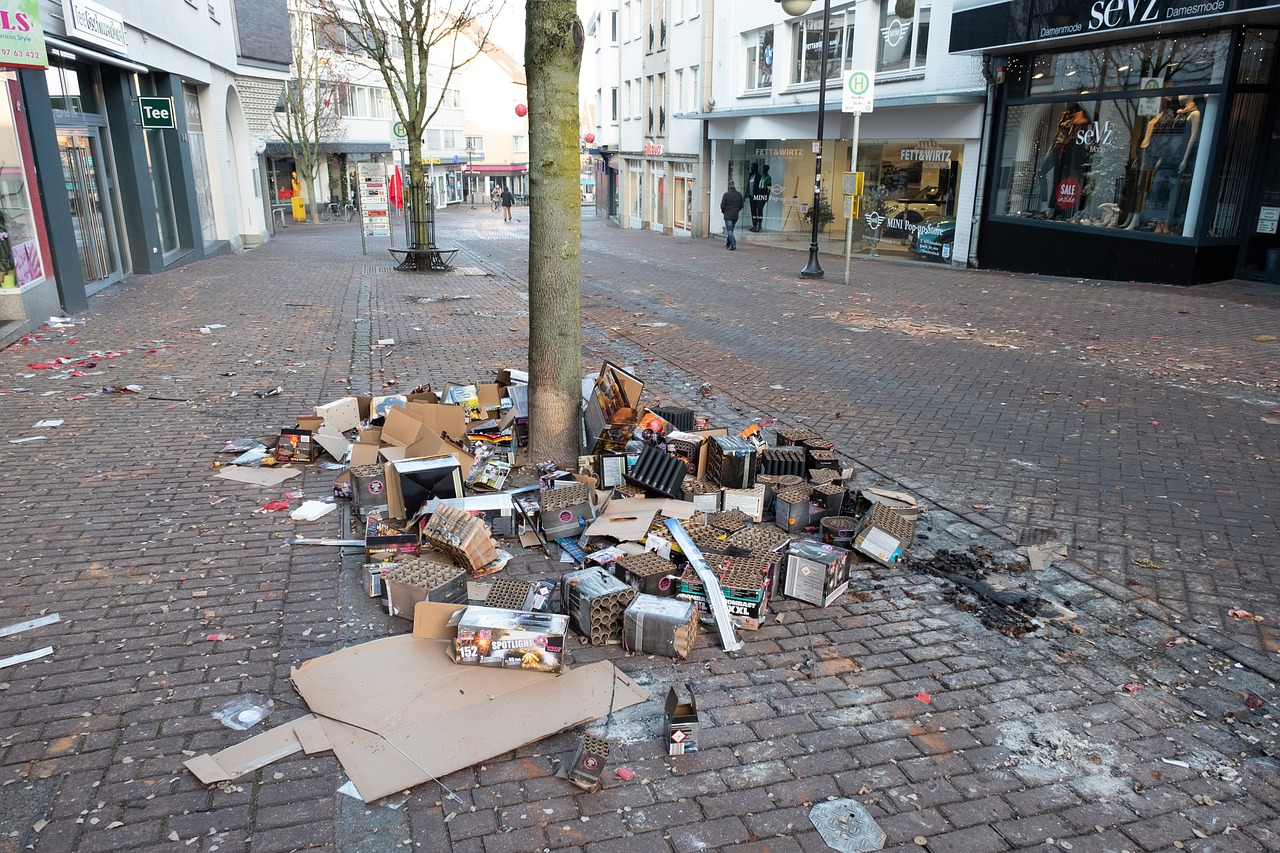
Reducing Landfill Waste
When we think about waste, it often feels overwhelming, doesn't it? Every day, millions of tons of garbage are produced, and a significant portion of that ends up in landfills. It's like a never-ending cycle of waste piling up, threatening our environment and natural resources. However, recycling emerges as a hero in this narrative, offering a way to divert a substantial amount of waste from these overflowing landfills. Imagine if we could transform our trash into treasure instead of letting it rot away in a dump. By recycling, we can significantly reduce the volume of waste that requires disposal, which in turn minimizes the need for new landfill sites.
Landfills not only consume vast amounts of land but also contribute to various environmental issues. For instance, as waste decomposes, it can produce harmful gases and leachate, which can contaminate the soil and groundwater. By embracing recycling, we can tackle these issues head-on. Every item we recycle is one less item that needs to be buried in a landfill. This simple act can lead to a remarkable reduction in waste accumulation. For example, recycling just one ton of paper can save approximately 17 trees, 7,000 gallons of water, and reduce greenhouse gas emissions by one metric ton. Isn't that incredible?
Moreover, recycling not only reduces landfill waste but also fosters a sense of community responsibility. When individuals and families engage in recycling, they become part of a larger movement towards sustainability. It's like being part of a team where every little effort counts. Community recycling programs encourage participation, making it easier for everyone to contribute. Whether it's through curbside collection or local drop-off centers, these initiatives provide convenient options for residents to recycle.
To illustrate the impact of recycling on landfill waste reduction, consider the following table:
| Material | Recycling Rate (%) | Landfill Waste Reduced (tons) |
|---|---|---|
| Paper | 66.8 | 1,000,000 |
| Plastic | 9.1 | 300,000 |
| Glass | 31.3 | 200,000 |
| Metal | 34.9 | 150,000 |
This table highlights how different materials contribute to landfill waste when not recycled. The numbers are staggering, and they serve as a reminder of how crucial our recycling efforts are. By making conscious choices to recycle, we can collectively reduce the amount of waste that ends up in landfills, creating a cleaner, healthier environment for future generations.
In conclusion, reducing landfill waste through recycling is not just an environmental necessity; it's a moral obligation. Each of us holds the power to make a difference. By recycling, we can transform our waste management practices, conserve natural resources, and protect our planet. So, next time you toss something in the trash, pause for a moment and ask yourself: Can this be recycled? Your answer could lead to a cleaner world!
Q: What types of materials can be recycled?
A: Most common recyclable materials include paper, cardboard, plastics, glass, and metals. However, it's essential to check local recycling guidelines as they can vary.
Q: How does recycling help the economy?
A: Recycling creates jobs in the recycling industry, stimulates local economies, and reduces the costs associated with waste management. It’s a win-win for both the environment and our wallets!
Q: What happens to recycled materials?
A: Recycled materials are processed and transformed into new products, which can include anything from recycled paper products to new plastic bottles. This process conserves resources and energy.
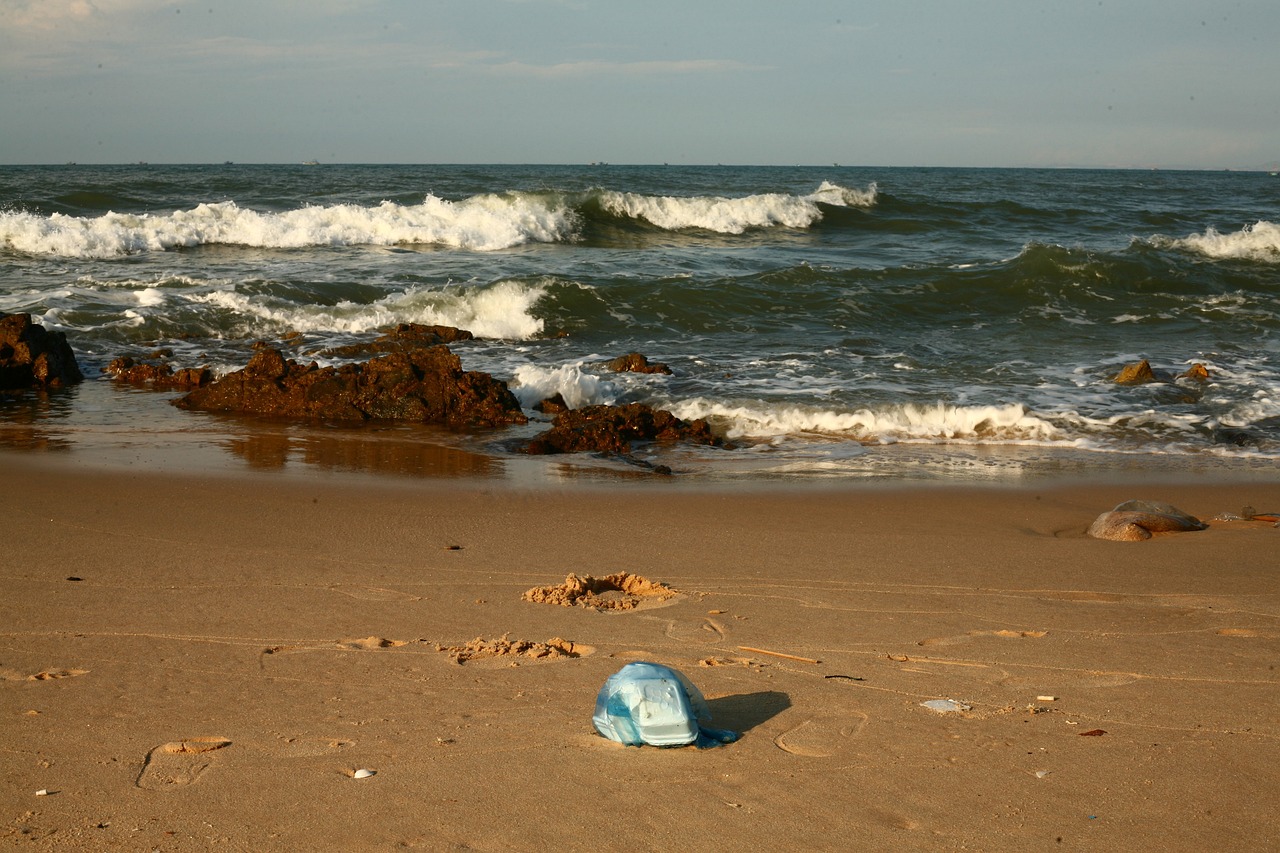
Impact on Soil and Water
When we think about recycling, we often focus on the big picture: reducing waste and conserving resources. However, one of the most critical yet overlooked aspects is its profound . Landfills, where waste often ends up, can pose serious threats to our environment. They are not just unsightly mounds of trash; they are potential sources of soil and water contamination. When waste decomposes, it can produce leachate, a toxic liquid that seeps into the ground and can contaminate the soil and groundwater.
By recycling, we significantly reduce the volume of waste that ends up in landfills. This action not only lessens the amount of leachate produced but also minimizes the risk of hazardous substances leaching into our ecosystems. Imagine a world where our soil is rich and fertile, and our water sources are clean and pure. This vision is achievable through responsible waste management and recycling practices. The less waste we send to landfills, the less chance there is for harmful chemicals to infiltrate our soil and water systems.
Furthermore, certain materials, such as plastics and metals, can take hundreds of years to decompose. During this long process, they can break down into microplastics and other pollutants that can infiltrate our soil and waterways, affecting wildlife and even entering our food chain. Recycling these materials not only conserves resources but also prevents them from becoming a part of the environmental problem.
To illustrate the benefits of recycling on soil and water, consider the following table:
| Material | Impact of Not Recycling | Impact of Recycling |
|---|---|---|
| Plastics | Leachate pollution, long decomposition time | Reduced landfill waste, less microplastic contamination |
| Metals | Soil contamination, energy-intensive mining | Conserved natural resources, reduced soil pollution |
| Paper | Deforestation, soil erosion | Preserved forests, improved soil health |
In conclusion, the impact of recycling on soil and water cannot be overstated. It is a crucial step towards ensuring that our natural resources remain intact for future generations. By making a conscious effort to recycle, we are not just cleaning up our communities; we are actively participating in the preservation of our planet’s health. So, the next time you toss something in the recycling bin, remember that you are making a choice that benefits not just you but the entire ecosystem.
- What types of materials can be recycled? Most common materials include paper, cardboard, glass, metals, and certain plastics.
- How does recycling help reduce pollution? Recycling reduces the need for new materials, which in turn decreases greenhouse gas emissions and pollution from manufacturing processes.
- Can recycling really make a difference? Yes! Recycling can significantly reduce waste, conserve natural resources, and protect the environment.
- How can I get involved in local recycling efforts? Check with your local government or community organizations for recycling programs, events, and educational initiatives.
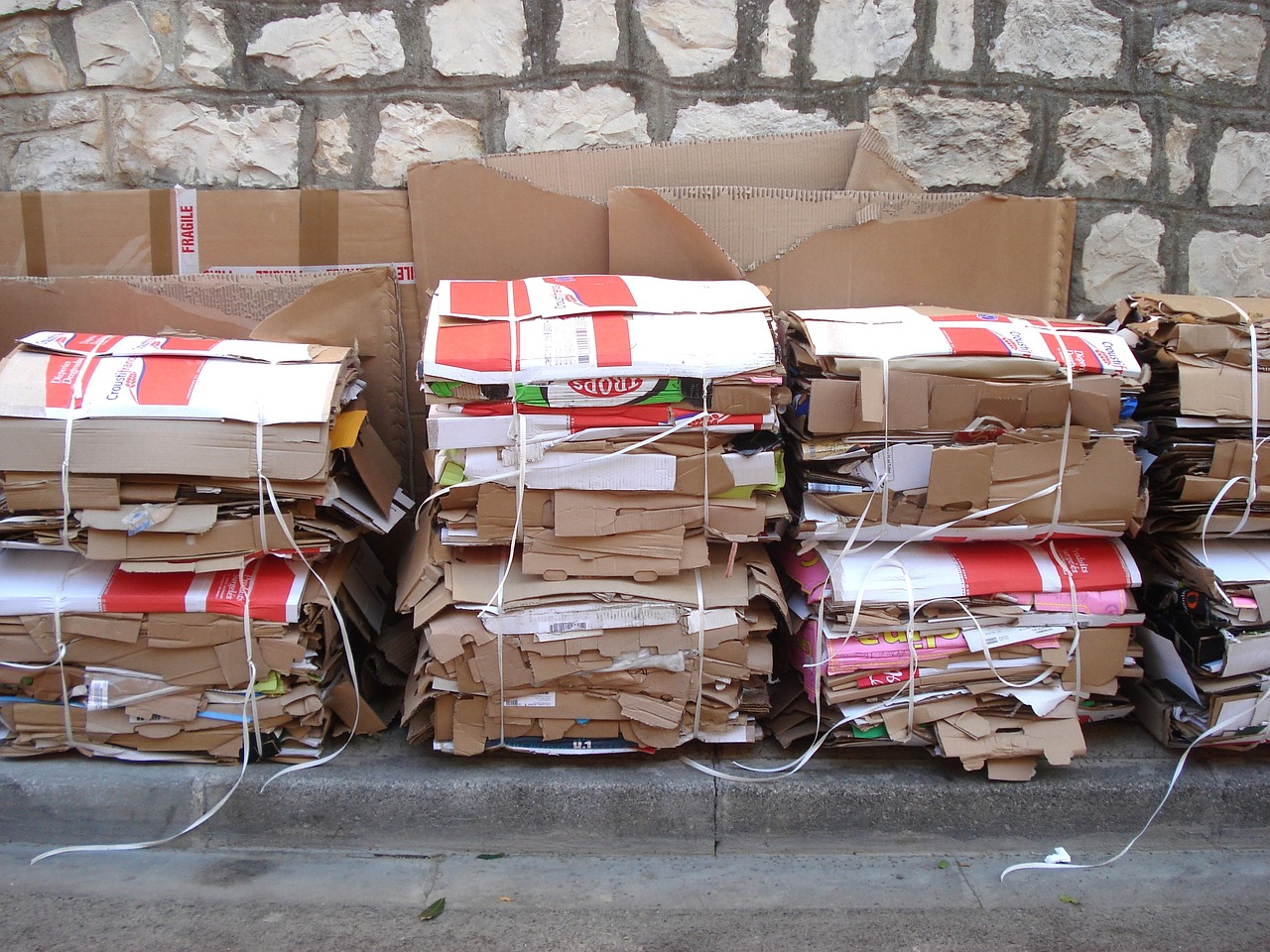
Conserving Energy
When we talk about , recycling is like a superhero in disguise. It swoops in to save the day by requiring significantly less energy compared to producing new materials from scratch. Imagine trying to bake a cake from raw ingredients versus using leftovers to whip up something delicious. In the world of materials, recycling is that leftover cake, saving resources and energy in the process.
To grasp the magnitude of this energy conservation, consider the following: recycling aluminum saves about 95% of the energy needed to produce it from raw materials. That's like powering your home for six months just by recycling a single aluminum can! When we recycle paper, we save about 60% of the energy required to create new paper from trees. This not only helps in conserving forests but also reduces the energy consumption associated with logging, transporting, and processing raw materials.
Moreover, the energy savings from recycling extend beyond just the materials we handle. It also translates into a significant reduction in greenhouse gas emissions. By using less energy, we burn fewer fossil fuels and, in turn, emit fewer pollutants into the atmosphere. This is crucial in our fight against climate change, as every little bit counts. The less energy we consume, the smaller our carbon footprint becomes, creating a ripple effect that benefits the entire planet.
Here’s a quick overview of energy savings from recycling some common materials:
| Material | Energy Saved (%) |
|---|---|
| Aluminum | 95% |
| Paper | 60% |
| Glass | 30% |
| Plastic | 70% |
In essence, recycling is not just about cleaning up our communities or reducing waste; it’s a fundamental practice that leads to energy conservation and a healthier environment. As we embrace recycling, we also take a significant step towards a sustainable future, ensuring that we leave behind a planet that can thrive for generations to come. So next time you toss that plastic bottle in the recycling bin, remember—you’re not just recycling; you’re saving energy and helping to protect our planet!
- Why is recycling important for energy conservation? Recycling conserves energy by using less power to process materials than making new products from raw resources.
- How much energy can be saved by recycling aluminum? Recycling aluminum saves about 95% of the energy required to produce it from raw materials.
- What materials are the most energy-efficient to recycle? Aluminum, paper, and plastic are among the most energy-efficient materials to recycle.
- How does recycling impact greenhouse gas emissions? Recycling reduces energy consumption, which in turn lowers greenhouse gas emissions, helping to combat climate change.

Economic Advantages of Recycling
This article explores how recycling contributes to the conservation of natural resources, its environmental impact, and the various benefits it offers to society and the economy.
Recycling plays a crucial role in reducing waste and conserving natural resources. Understanding its importance helps individuals and communities make informed decisions about waste management and resource conservation.
Recycling significantly reduces pollution and greenhouse gas emissions. By processing materials more sustainably, we can mitigate climate change and protect ecosystems, making it vital for environmental health.
By recycling, we can divert a substantial amount of waste from landfills, which helps reduce the need for new landfill sites and minimizes environmental degradation associated with waste disposal.
Landfills can contaminate soil and water sources. Recycling lessens the volume of waste in landfills, thereby reducing the risk of leachate and other harmful substances affecting our ecosystems.
Recycling often requires less energy than producing new materials from raw resources. This energy conservation is essential for reducing fossil fuel consumption and lowering overall carbon footprints.
Recycling is not just an environmental necessity; it is also a significant economic driver. When we recycle, we create a ripple effect that positively impacts various sectors. For instance, the recycling industry generates jobs and stimulates local economies. According to the National Recycling Coalition, recycling and reuse activities in the U.S. alone account for over 1.1 million jobs and generate $236 billion in revenue. This is a clear indicator that recycling is not only good for the planet but also for our wallets.
Moreover, recycling reduces the need for raw materials, which can often be costly to extract and process. By utilizing recycled materials, companies can lower their production costs. This not only makes products more affordable for consumers but also enhances the competitiveness of businesses in the market. For example, recycling aluminum saves about 90% of the energy required to produce new aluminum from raw bauxite. This substantial energy saving translates into lower operational costs for manufacturers, which can then be passed on to consumers in the form of lower prices.
Another economic advantage is the creation of a sustainable supply chain. When communities invest in recycling programs, they foster local businesses that handle recycled materials. This creates a circular economy where materials are reused, reducing the demand for new resources and minimizing waste. In fact, a study by the Institute for Local Self-Reliance found that recycling creates nearly 3 times more jobs than landfilling or incineration. This job creation is crucial in today’s economy, where sustainable practices are increasingly valued by consumers.
To summarize, the economic advantages of recycling are multifaceted:
- Job Creation: Recycling generates employment opportunities across various sectors.
- Cost Savings: Companies save money on raw materials and energy costs.
- Local Business Growth: Recycling fosters the development of local businesses and a sustainable economy.
Community participation is vital for successful recycling programs. Engaging residents through education and initiatives fosters a culture of recycling and resource conservation at the local level.
Implementing educational programs in schools and communities raises awareness about the importance of recycling, encouraging responsible behavior and promoting sustainable practices among individuals of all ages.
Local governments and organizations often implement recycling initiatives to enhance participation. These programs can include curbside collection, drop-off centers, and community events to promote recycling awareness and engagement.
Most common recyclable materials include paper, cardboard, glass, metals, and certain plastics. Always check local guidelines as they can vary.
Recycling creates jobs, reduces costs for manufacturers, and promotes local businesses, contributing to a healthier economy.
Absolutely! Recycling reduces waste, conserves natural resources, and lowers greenhouse gas emissions, making a significant positive impact on the environment.
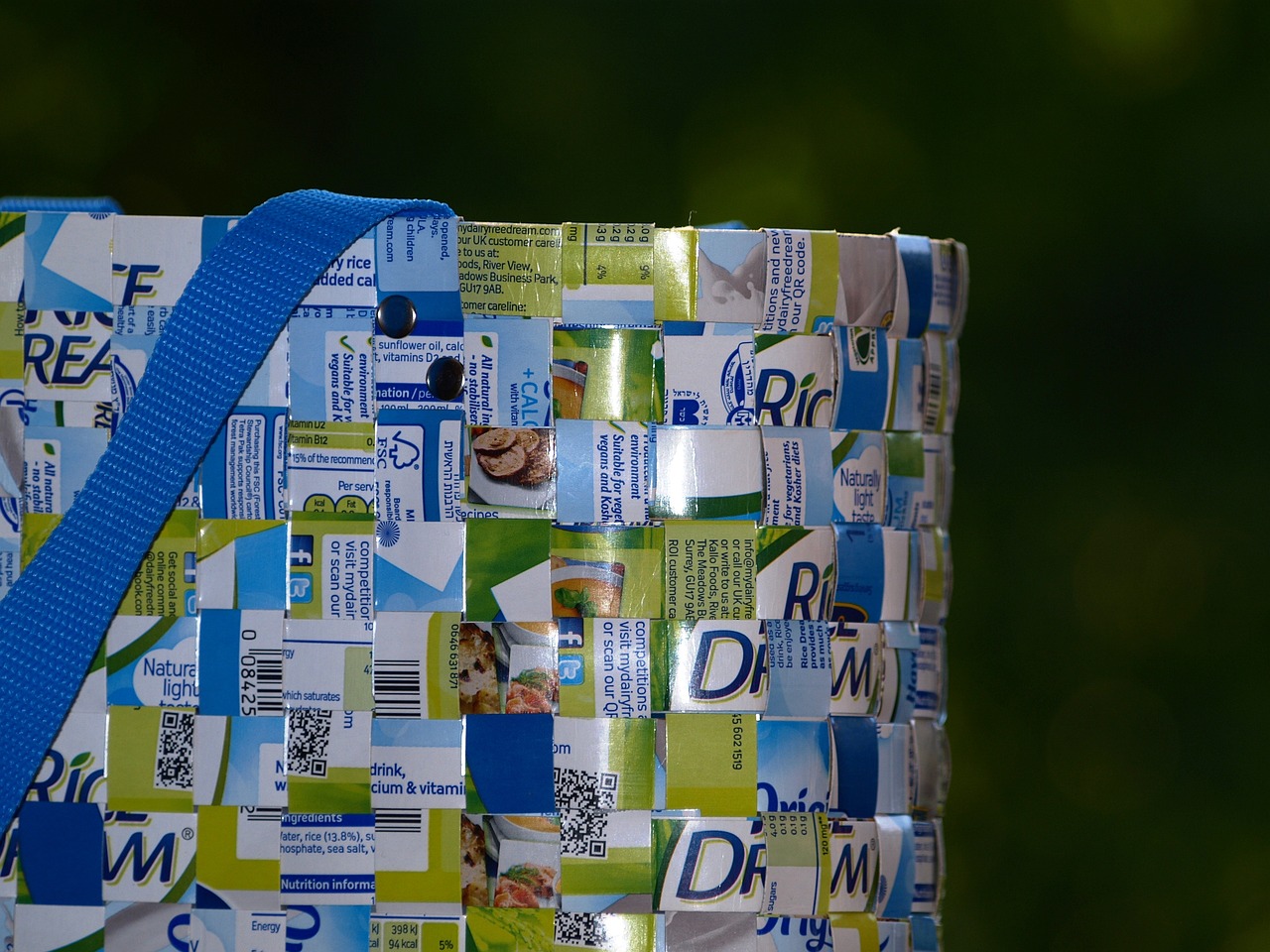
Community Involvement in Recycling
Community involvement in recycling is not just a nice-to-have; it’s a fundamental pillar that supports the entire recycling framework. When individuals come together, their collective actions can have a **significant impact** on waste management and resource conservation. Think of it as a team sport—when everyone plays their part, the results can be astounding! By fostering a culture of recycling, communities can not only enhance their environmental footprint but also create a sense of unity and purpose among residents.
Engaging the community is crucial for the success of recycling programs. It’s all about creating awareness and making recycling a **shared responsibility**. Local governments and organizations play a vital role in this process, often implementing various initiatives to encourage participation. For example, they might set up curbside collection services or establish drop-off centers where residents can conveniently dispose of recyclable materials. These initiatives help to break down barriers and make recycling accessible to everyone.
Moreover, educational programs are an essential strategy for building community involvement. By teaching residents about the benefits of recycling and how to do it effectively, communities can cultivate a more environmentally conscious populace. Schools, in particular, can serve as the **nucleus of this educational effort**. Imagine kids coming home and sharing what they’ve learned about recycling—this not only empowers them but also influences their families to adopt sustainable practices. It’s like planting seeds of change that can grow into a forest of environmentally responsible behavior.
To further enhance community engagement, local events can be organized. These events can range from recycling drives to workshops where residents learn how to upcycle materials. Such gatherings create a vibrant atmosphere where people can share ideas, learn from one another, and feel motivated to participate in recycling efforts. A community that comes together for a common cause often sees an increase in participation; it becomes a **shared journey** towards sustainability.
In essence, community involvement in recycling is about more than just reducing waste; it’s about creating a culture of sustainability that benefits everyone. When people feel connected to their community and understand their role in protecting the environment, they are more likely to engage in recycling practices. This engagement not only leads to a cleaner environment but also fosters a sense of pride and accomplishment among residents. So, let’s roll up our sleeves and get involved—because together, we can make a difference!
- Why is community involvement important in recycling? Community involvement is crucial because it fosters a culture of sustainability, encourages participation, and amplifies the overall impact of recycling efforts.
- How can I get involved in my community's recycling efforts? You can participate by attending local events, volunteering for recycling initiatives, and spreading awareness about the importance of recycling within your social circles.
- What are some effective ways to educate others about recycling? Organizing workshops, school programs, and community meetings can effectively educate others about recycling and its benefits.

Educational Programs
Implementing in schools and communities is one of the most effective ways to raise awareness about the importance of recycling. These programs serve as a bridge between knowledge and action, transforming theoretical understanding into practical, everyday behavior. Imagine a classroom filled with curious students, each eager to learn how their small actions can lead to significant changes in the world around them. This is the essence of educational initiatives aimed at promoting recycling.
One of the key aspects of these programs is their ability to engage individuals of all ages. For instance, schools can incorporate recycling education into their curricula, making it a part of science or social studies lessons. By integrating recycling topics into existing subjects, teachers can help students understand the broader implications of waste management and resource conservation. This approach not only informs students but also empowers them to become advocates for sustainable practices in their homes and communities.
Moreover, community workshops and events can be organized to further enhance public understanding of recycling. These workshops can cover various topics, such as:
- How to properly sort recyclable materials
- The environmental impact of waste and recycling
- Innovative recycling practices and technologies
Such interactive sessions encourage participants to ask questions, share experiences, and engage in discussions that demystify the recycling process. By fostering a sense of community and shared responsibility, these programs can create a culture of recycling that extends beyond the classroom and into everyday life.
Additionally, leveraging technology can amplify the reach and effectiveness of educational programs. Online platforms and social media can be utilized to disseminate information, share success stories, and provide resources for individuals looking to improve their recycling habits. Virtual workshops can also cater to those who may not have access to local programs, ensuring that everyone has the opportunity to learn and participate.
In summary, educational programs play a vital role in equipping individuals with the knowledge and skills necessary to engage in recycling effectively. By fostering an environment of learning, collaboration, and innovation, these initiatives can significantly impact the community's approach to waste management and resource conservation.
Q: Why are educational programs important for recycling?
A: Educational programs raise awareness, inform the public about proper recycling practices, and foster a culture of sustainability, making recycling a community norm.
Q: How can schools implement recycling education?
A: Schools can incorporate recycling topics into their curricula, host workshops, and organize events that engage students and their families in recycling activities.
Q: What role does technology play in recycling education?
A: Technology can enhance recycling education by providing online resources, virtual workshops, and social media campaigns that reach a wider audience.
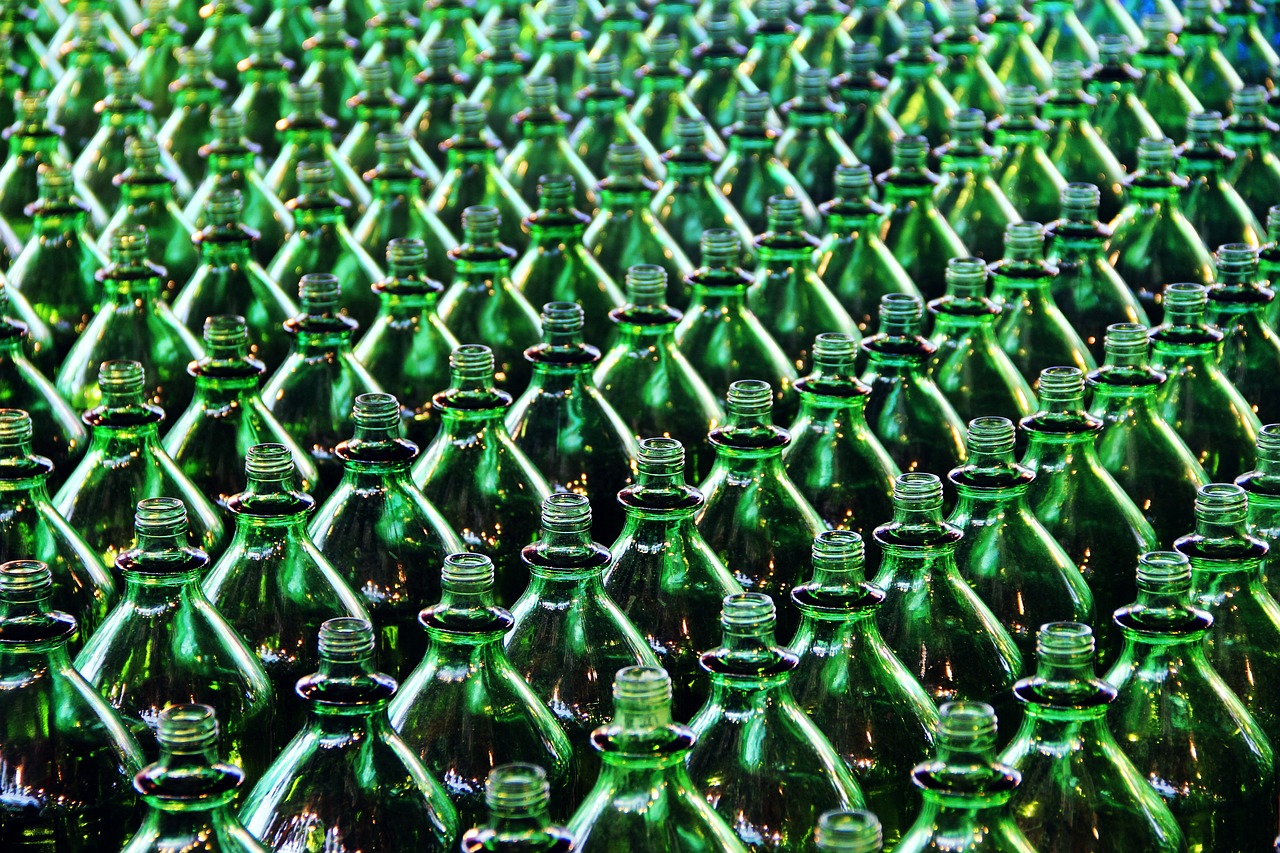
Local Recycling Initiatives
Local recycling initiatives are the backbone of effective waste management and resource conservation. These programs are designed to engage communities, making recycling a part of everyday life. When local governments and organizations step up to implement these initiatives, they create a ripple effect that encourages residents to participate actively. Have you ever thought about how a small change in your neighborhood can lead to a significant impact on the environment? That's the power of local recycling initiatives!
One of the most effective ways communities promote recycling is through curbside collection programs. Imagine waking up on a Wednesday morning, putting your recyclables out on the curb, and knowing that you are contributing to a cleaner planet. These programs make recycling convenient and accessible for everyone. Residents don’t have to go out of their way to recycle; they can simply toss their items into the designated bin, and voila! The waste management team takes care of the rest. This convenience significantly boosts participation rates.
In addition to curbside collection, many communities have established drop-off centers. These centers serve as designated locations where residents can bring their recyclables whenever it suits them. This flexibility is crucial for those who may not have curbside service or prefer to take their recyclables directly to a center. Local governments often promote these drop-off centers through community events, flyers, and social media campaigns, ensuring that everyone knows where they can recycle.
Speaking of community events, these are fantastic opportunities to foster a culture of recycling. Events such as recycling drives, where residents can bring in specific items like electronics or hazardous waste, not only help clean up the community but also educate participants on what can be recycled. These events often include fun activities for families, making it a day out while promoting sustainability. It’s a win-win situation!
Moreover, partnerships with local businesses can enhance recycling initiatives. For instance, some businesses offer discounts or incentives for customers who bring in their recyclables. This not only encourages recycling but also builds a sense of community. When local businesses support recycling efforts, it sends a strong message that sustainability is a shared goal.
To sum it up, local recycling initiatives are crucial for promoting sustainable practices and engaging communities in environmental stewardship. They provide the tools and opportunities for residents to make a difference, demonstrating that when we work together, we can create a cleaner, greener future. So, the next time you see a recycling bin or a community event promoting recycling, remember that you have the power to make an impact!
- What items can I recycle in my local program? - Most local recycling programs accept paper, cardboard, plastics, metals, and glass. However, it's essential to check with your local guidelines as they can vary.
- How can I get involved in local recycling initiatives? - You can participate by using curbside recycling services, visiting drop-off centers, and attending community events focused on recycling.
- What are the benefits of recycling? - Recycling conserves natural resources, reduces pollution, saves energy, and can create economic opportunities through job creation.
Frequently Asked Questions
- What is recycling and why is it important?
Recycling is the process of converting waste materials into new products. It’s important because it helps reduce waste, conserves natural resources, and minimizes pollution. By recycling, we can ensure that valuable materials are reused, which ultimately supports a healthier environment.
- How does recycling benefit the environment?
Recycling benefits the environment in several ways. It reduces the amount of waste sent to landfills, decreases pollution, conserves energy, and lessens greenhouse gas emissions. By recycling, we can help mitigate climate change and protect ecosystems, making our planet a cleaner and safer place to live.
- What materials can be recycled?
Common materials that can be recycled include paper, cardboard, glass, plastics, and metals. However, the recyclability of materials can vary by location, so it's always a good idea to check with your local recycling program for specific guidelines.
- How does recycling reduce landfill waste?
Recycling reduces landfill waste by diverting materials that would otherwise be thrown away. This not only extends the lifespan of existing landfills but also decreases the need for new landfill sites, which can harm the environment. By recycling, we can significantly lessen our waste footprint.
- Can recycling really save energy?
Yes, recycling can save a significant amount of energy. Producing new products from recycled materials often requires less energy compared to using raw materials. For example, recycling aluminum saves up to 95% of the energy needed to create new aluminum from bauxite ore!
- What role does the community play in recycling?
The community plays a vital role in recycling by participating in local programs and initiatives. Education and awareness campaigns can foster a culture of recycling, encouraging residents to adopt sustainable practices and contribute to the overall success of recycling efforts.
- How can I get involved in local recycling initiatives?
You can get involved in local recycling initiatives by participating in community clean-up events, volunteering for local recycling programs, or simply spreading the word about the importance of recycling. Many communities also offer educational workshops and resources to help residents engage more effectively.
- What are the economic benefits of recycling?
Recycling creates economic opportunities by generating jobs in the recycling industry and related sectors. It also stimulates the economy by reducing the costs associated with waste disposal and resource extraction. Investing in recycling can lead to a more sustainable and resilient economy.



















